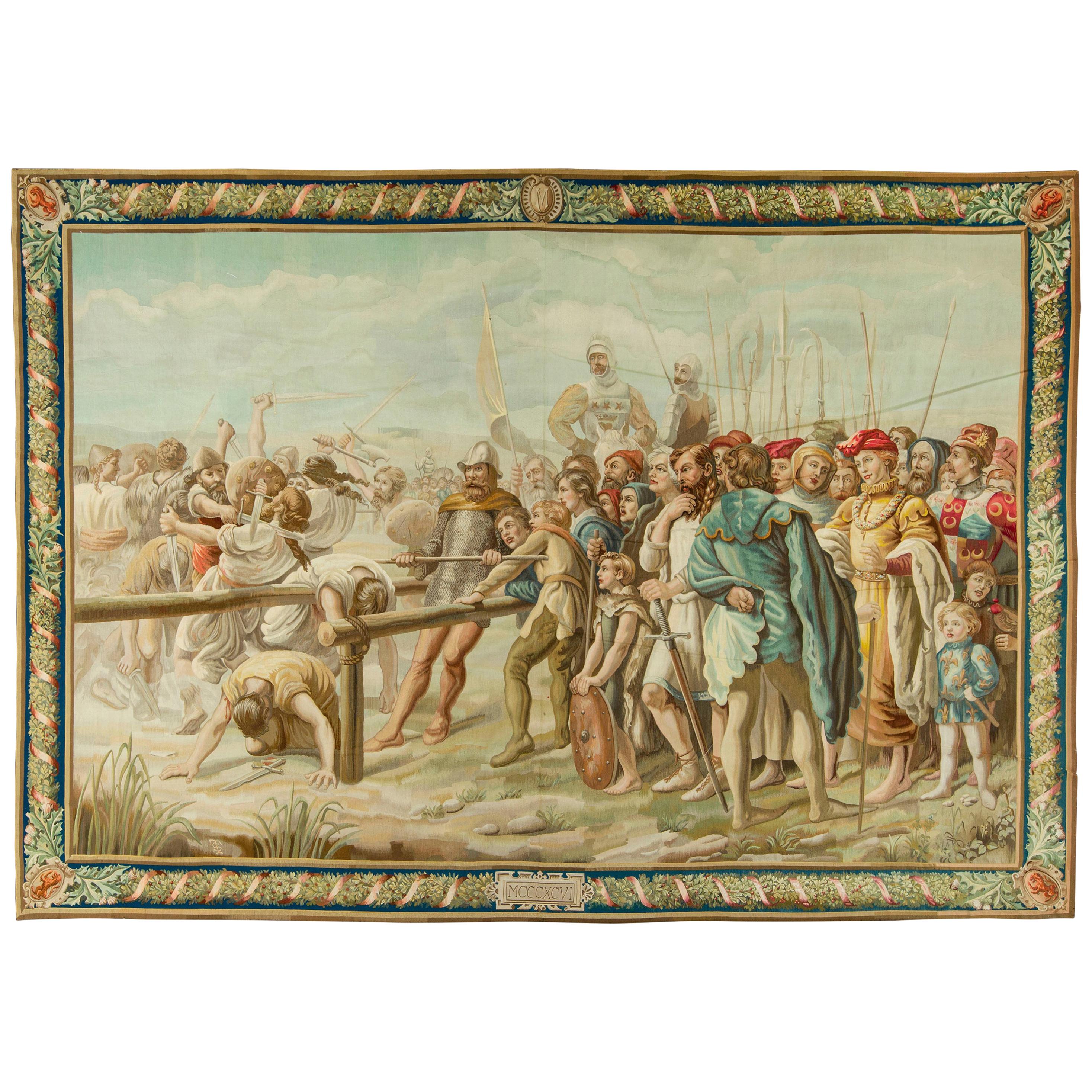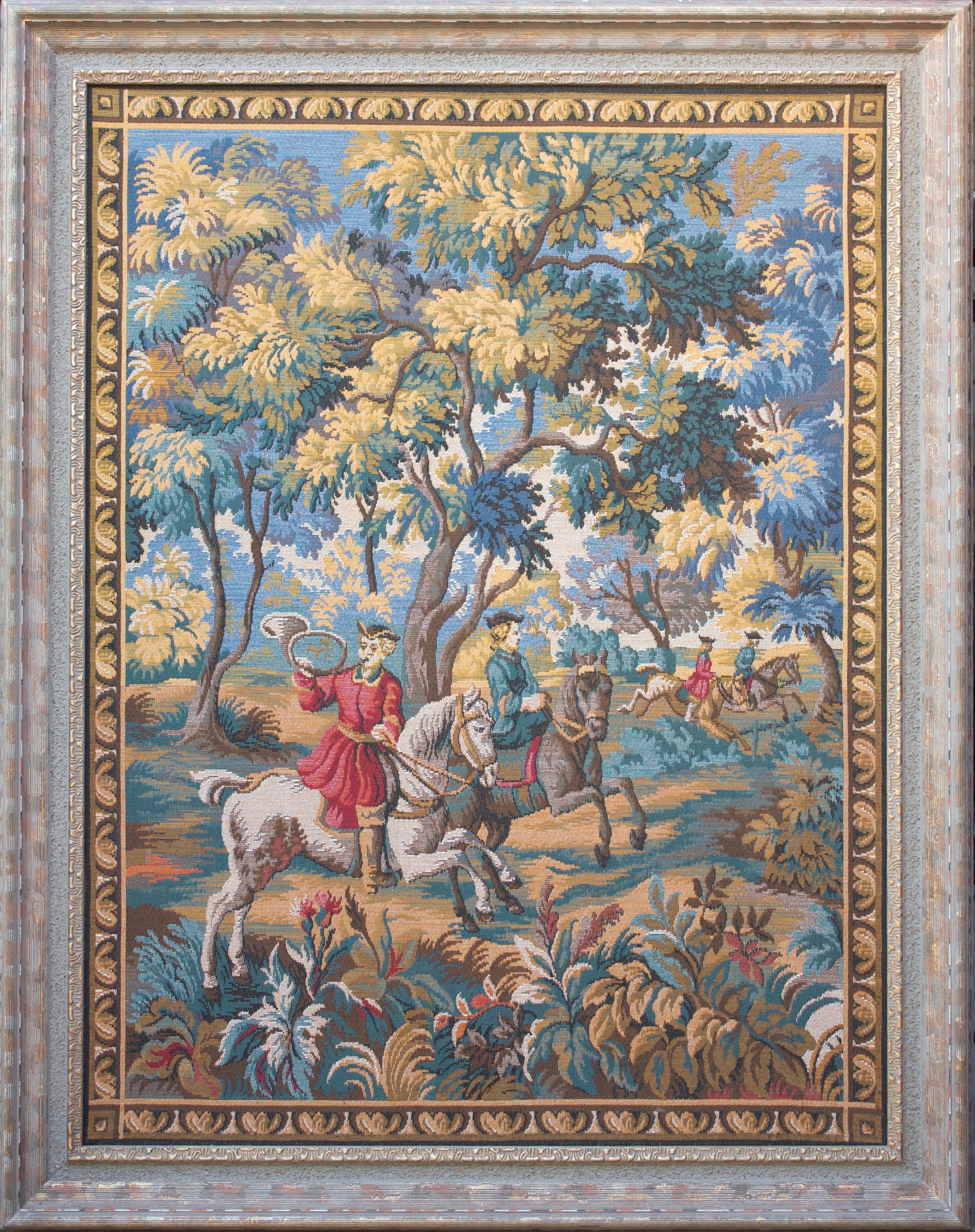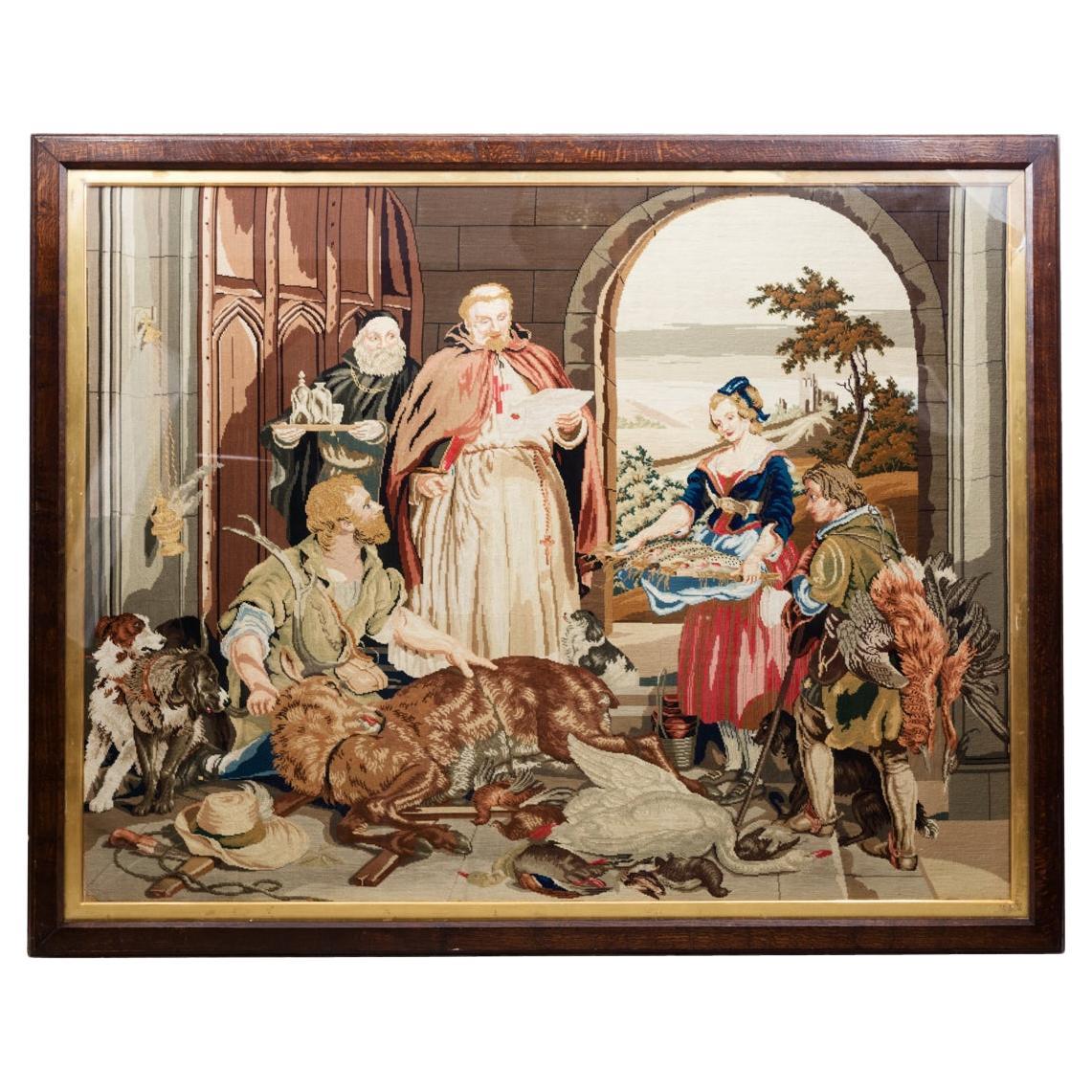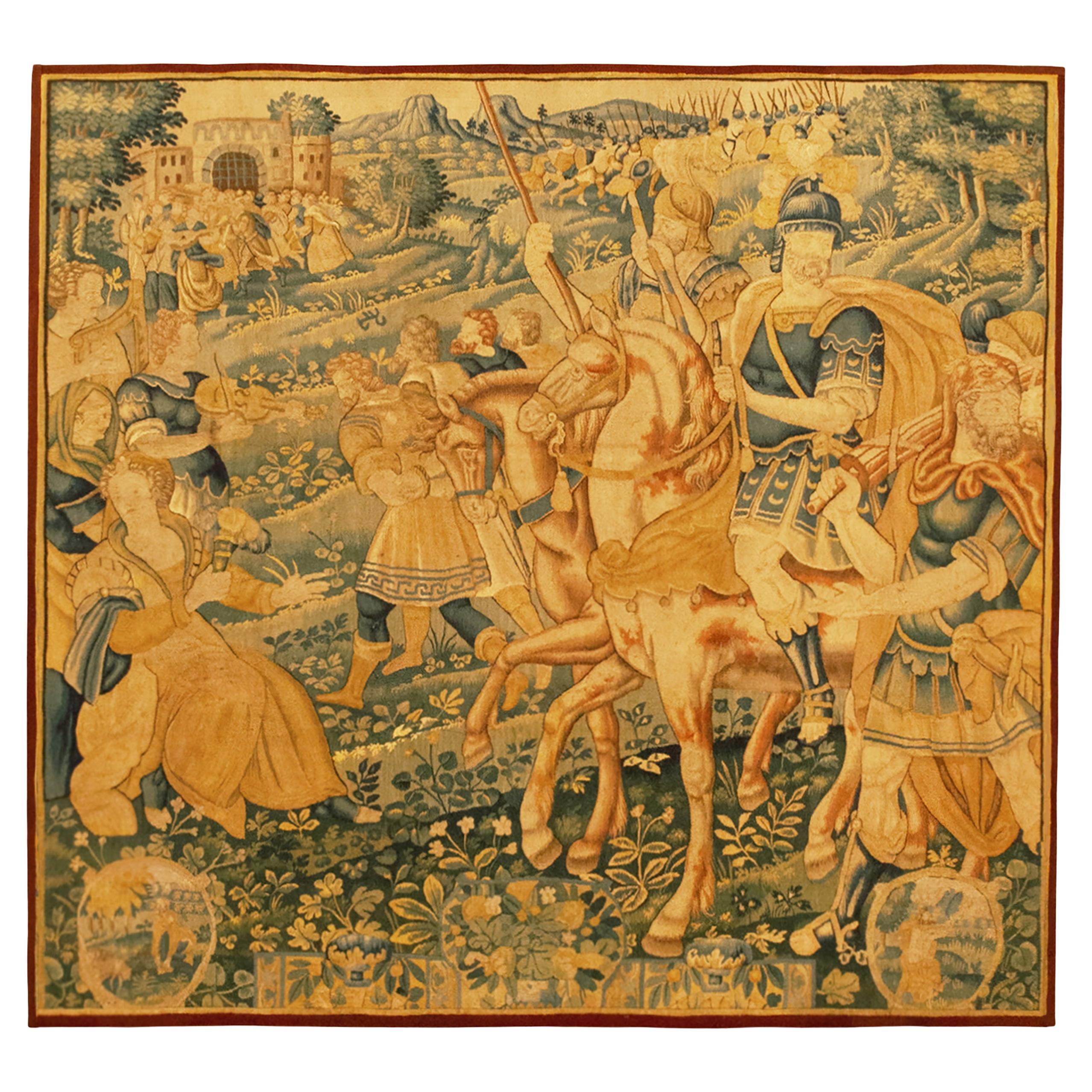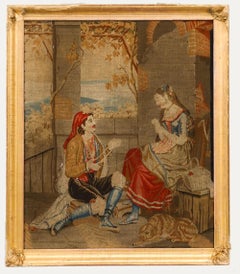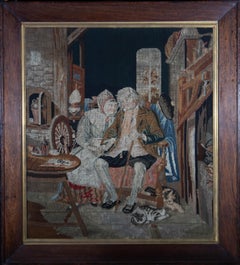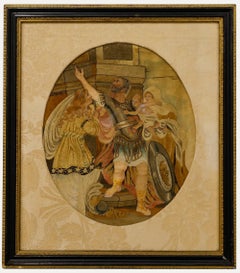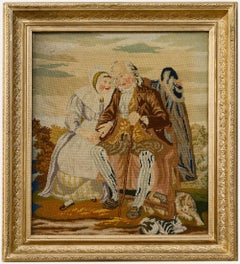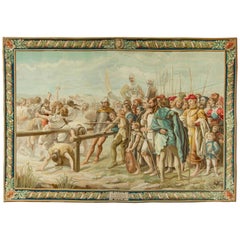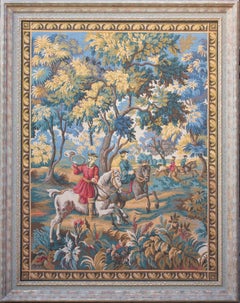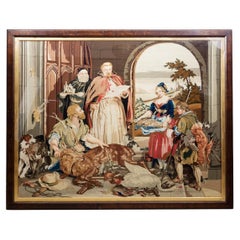Items Similar to Large Late 19th Century Needlepoint - The Return of the Chevaliers
Want more images or videos?
Request additional images or videos from the seller
1 of 6
UnknownLarge Late 19th Century Needlepoint - The Return of the ChevaliersUnknown
Unknown
$517.60
$64720% Off
£403.07
£503.8420% Off
€458.49
€573.1220% Off
CA$745.43
CA$931.7920% Off
A$818.02
A$1,022.5220% Off
CHF 427.25
CHF 534.0720% Off
MX$9,780.30
MX$12,225.3720% Off
NOK 5,411.93
NOK 6,764.9120% Off
SEK 5,047.64
SEK 6,309.5520% Off
DKK 3,424.30
DKK 4,280.3820% Off
About the Item
A large needlepoint scene in wool with gold silk thread depicting two chevaliers returning from battle, likely after an original tapestry or painting, dating to the late-19th or early-20th century. Presented glazed in an oak frame.
- Creation Year:Unknown
- Dimensions:Height: 27.56 in (70 cm)Width: 33.67 in (85.5 cm)
- Medium:
- Period:
- Condition:There is some discolouration to the upper-left quadrant but overall in good condition.
- Gallery Location:Corsham, GB
- Reference Number:Seller: qp4631stDibs: LU881310193872
About the Seller
4.9
Platinum Seller
Premium sellers with a 4.7+ rating and 24-hour response times
Established in 2010
1stDibs seller since 2018
1,432 sales on 1stDibs
Typical response time: 3 hours
- ShippingRetrieving quote...Shipping from: Corsham, United Kingdom
- Return Policy
More From This Seller
View All19th Century Embroidery - Winding Silk
Located in Corsham, GB
A charming scene depicting two lovers in a tower winding silk together. Unsigned. Presented in a gilt frame. On cotton.
Category
19th Century More Art
Materials
Tapestry
Late 19th Century Embroidery - A Timeless Love
Located in Corsham, GB
A charming petit point needlework from the late 19th Century, showing a heartwarming scene of an elderly couple sitting in a close embrace in their home with the cat and dog at their...
Category
19th Century More Art
Materials
Tapestry
$337 Sale Price
20% Off
After Giovanni Battista Cipriani - Century Embroidery, The Departure of Hector
Located in Corsham, GB
Early 19th-century embroidery with watercolor collage details. Unsigned. Presented in a Hogarth-style frame with a damask silk mount. On panel.
Category
Early 19th Century More Art
Materials
Tapestry
19th Century Embroidery - The Happy Couple
Located in Corsham, GB
A delightful embroidered scene depicting an elderly couple laughing together in a landscape. Their pet cat and dog sleep at their feet. Unsigned. Well presented in a gilt frame with ...
Category
19th Century More Art
Materials
Tapestry
American Early 19th Century - Silkwork Picture with Figures
Located in Corsham, GB
Rare American silkwork picture. Presented in a charming gilt-effect frame with glazing. On linen.
Category
Early 19th Century More Art
Materials
Tapestry
$464 Sale Price
20% Off
19th Century Embroidery - Collecting Kindling
Located in Corsham, GB
Unsigned. With watercolour painting to the background. Presented in an oval Hogarth style frame. On silk.
Category
19th Century More Art
Materials
Tapestry
$390 Sale Price
20% Off
You May Also Like
Victorian 19thC Needlework Panel Of A Scottish Huntsman Signed J
Located in Bristol, CT
Panel Sz: 22"H x 14"W
Frame Sz: 28 3/4"H x 20 3/4"W
Mounted on burgundy felt
Category
19th Century More Art
Materials
Fabric, Felt
Vintage French Tapestry, circa 1940 10'11 x 15'
Located in Secaucus, NJ
An unusual subject with a crowd of courtiers and villages looking on as a battle takes place. This tapestry is a French handwoven 1940s copy of an earlier piece. Measures: 10'11 high...
Category
Early 20th Century French Tapestries
Materials
Wool
Aubusson Style French Jacquard Tapestry with Hunting Scene
Located in Austin, TX
A lavish French Aubbusson style jacquard tapestry depicting an exciting Renaissance era hunting scene. The scene is set in a dense forest of blue, g...
Category
20th Century Folk Art More Art
Materials
Tapestry
Late 19th Century Framed Needlework Tapestry Scene
Located in Dublin 8, IE
Late 19th Century framed needlework tapestry scene based on the painting ‘Bolton Abbey in the Olden Time’ by Sir Edwin Landseer, the original of which hangs in Chatsworth House, Devo...
Category
Antique Late 19th Century English Romantic Tapestries
Materials
Tapestry
17th Century Flemish Historical Tapestry with the Roman General Coriolanus
Located in New York, NY
A Flemish historical tapestry panel from the 17th century, featuring the famed Roman general, Gaeus Marcius, now called Coriolanus, returning triumphantly from the battle in which he captured the Volscian town of Corioli, arriving on horseback with his Volscian prisoners in tow, and greeted by his domineering mother, Volumnia, as well as the cheering Roman townspeople. Enclosed within a narrow monochrome border. Wool with silk inlay. Measures: 8’6” H x 7’10” W.
Hanging: The tapestry comes ready for hanging, with linen backing and a strip of hook and loop tape at the top end, which can be connected to the opposite side of the supplied hook and loop tape, which could be tacked to your wall. For those who prefer the use of a tapestry rod...
Category
Antique Early 17th Century Belgian Tapestries
Materials
Wool, Silk
$25,996 Sale Price
20% Off
"Scenes Galantes" Gallant Scenes Tapestry
Located in Atlanta, GA
French made, Jacquard woven with relief stitch. Fully lined with rod pocket for hanging.
65% wool with/cotton/rayon/polyester.
Also available in size 67 x 88 ( $1250.00) . Please me...
Category
Late 20th Century Medieval More Art
Materials
Tapestry
$756 Sale Price
20% Off
More Ways To Browse
Original Tapestry
Large Antique Tapestry Tapestries
Silks With Gold Threads
Original Pop Art
Pop Art Artists
Vintage Animation
Vintage Comics
Production Cel
Batman Vintage
Nina Tsoriti Art
Pecci Blunt
Pop Art Batman
Vintage Batman Art
Used Neon Lights
Superman Art
Bruce Timm
Pop Art Superman
Batman The Animated Series Original Production Drawing
